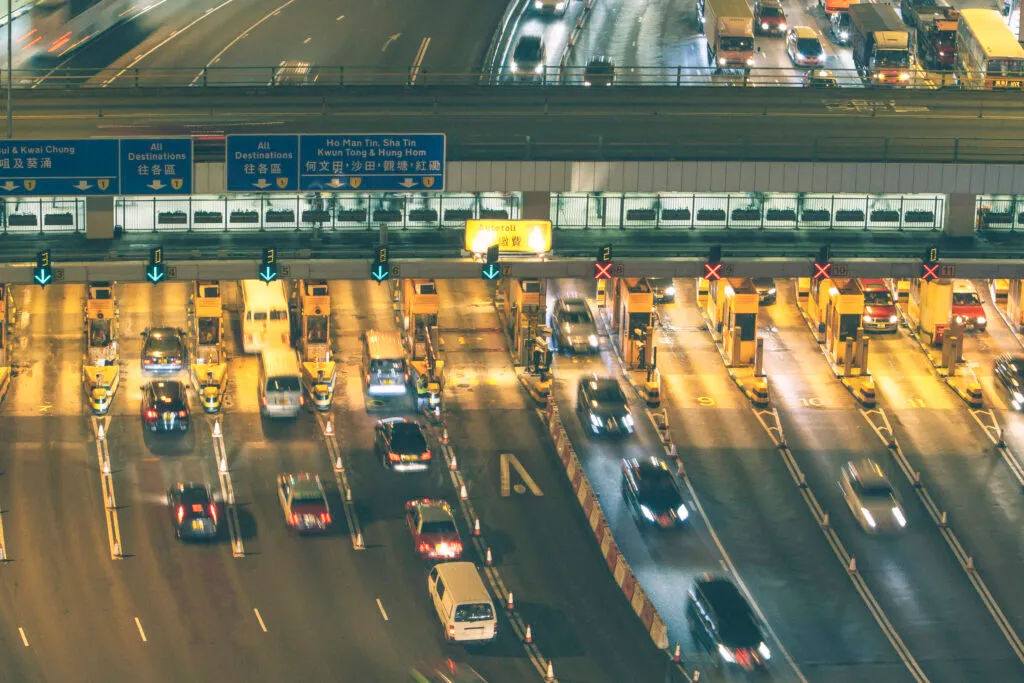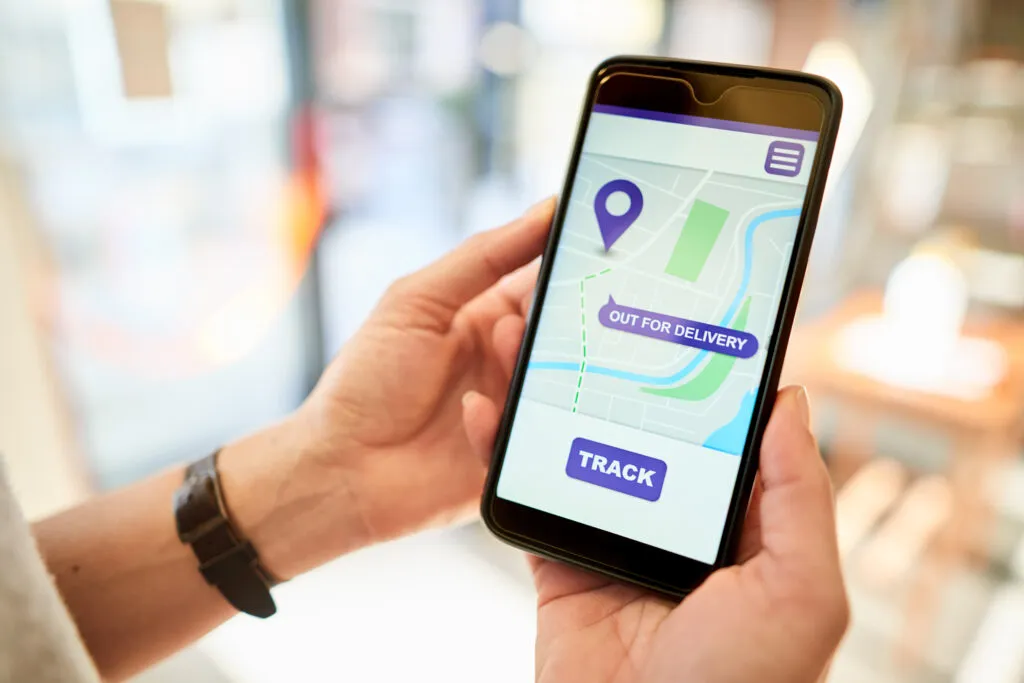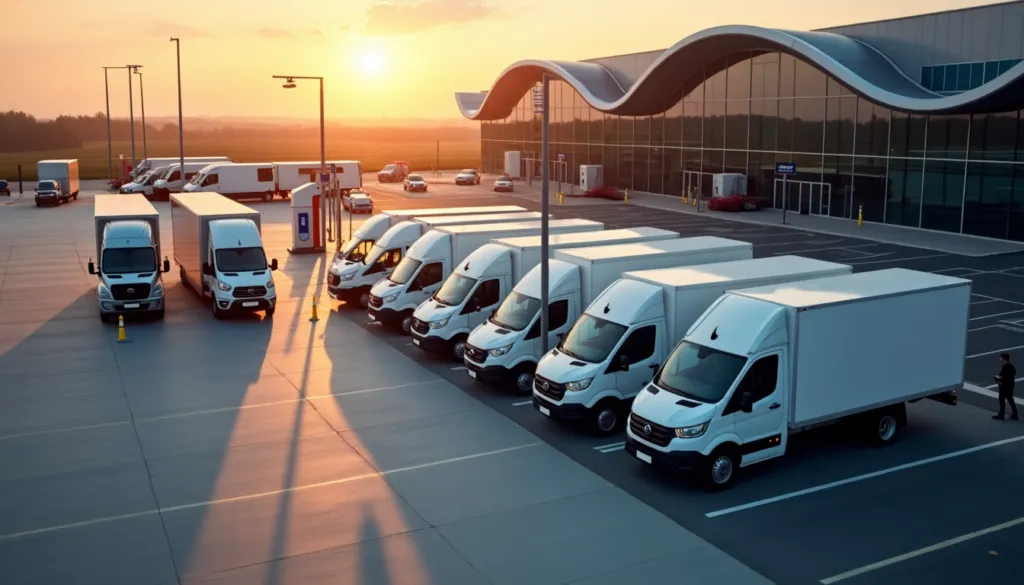
Get home early with RoadWarrior.
Enter your stops, optimize your routes, manage your team – quickly and efficiently.
Try RoadWarrior free for 7 days
Try free for 7 daysToll roads can be a frustrating and costly part of everyday life, especially for businesses that rely on delivery services. The burden of tolls can add up quickly and impact your bottom line. In this article, we will explore the various types of toll systems, discuss the benefits of avoiding toll roads, and provide step-by-step instructions on how to do so using Google Maps. We will also address common questions about toll roads and offer additional tips to optimize your business’s transportation costs. So let’s dive in and discover how you can navigate the roads without the burden of tolls.
Understanding the Different Types of Toll Systems
Toll roads come in various forms, each with its own unique payment structure. It’s important to familiarize yourself with these systems to make informed decisions about route planning and cost optimization. Here are the three main types of toll systems:
1. Barrier System or Open Toll System
In this system, you pay a fixed toll fee every time you pass a main toll booth or toll plaza to enter a roadway. The amount you pay is typically based on the type of vehicle you are driving. This system is commonly used in many states across the United States.
2. Ticket System or Closed System
With this system, you pay a toll fee based on your entry and exit points within the toll area. Examples of ticketed or closed systems include the New Jersey Turnpike, New York State Thruway, and Kansas Turnpike. The toll fee is calculated based on the distance traveled within the toll area.
3. Distance-Based System
In a distance-based system, you pay a toll fee based on the distance you travel on a toll road. The toll charges are calculated by monitoring the entry and exit points of your journey. This system is commonly used in conjunction with electronic toll pass systems.
The Benefits of Avoiding Toll Roads
Avoiding toll roads can bring numerous benefits to your business, including cost savings and improved efficiency. Here are some reasons why it’s worth considering:
- Cost Savings: Toll fees can quickly add up, especially if you have a fleet of delivery drivers. By avoiding toll roads, you can significantly reduce transportation costs, ultimately maximizing your business’s profitability.
- Efficiency: Toll roads are often congested, leading to delays and increased travel times. By opting for toll-free routes, you can save valuable time and ensure timely deliveries to your customers.
- Simpler Payment Process: Paying tolls can be a hassle, particularly if your drivers need to carry cash or have specific electronic toll passes. By avoiding tolls altogether, you eliminate the need for complex payment processes and simplify your drivers’ responsibilities.
How to Avoid Toll Roads Using Google Maps
Google Maps provides a convenient way to plan routes and avoid toll roads. Its real-time traffic data takes into account construction sites, traffic patterns, and roadblocks. By following these simple steps, you can ensure your drivers take toll-free routes:
- Download and Open the Google Maps App: If you haven’t already, download the Google Maps app from the Google Play Store (for Android) or the Apple App Store (for iPhone). Open the app, and it will automatically display your current location using GPS satellite technology.
- Enter Your Destination: Type your desired destination into the search bar at the top of the screen. Click on “Directions” (the blue button at the bottom) to proceed.
- Access Route Options: Tap the three vertical dots next to “Your Location” at the top of the screen. Then click on “Route Options.”
- Enable Toll Avoidance: Toggle the “Avoid tolls” option to ensure your route avoids toll roads. You can also customize other route options, such as avoiding ferries or highways, according to your preferences.
- Start Navigation: Return to the main Google Maps screen and click the blue “Start” button at the bottom right corner. Google Maps will provide you with a toll-free route, allowing you to navigate without the burden of tolls.
Additional Tips to Optimize Your Business’s Transportation Costs
Avoiding toll roads is just one aspect of optimizing your business’s transportation costs. Here are some additional tips to consider:
- Plan Efficient Routes: Utilize route optimization software like RoadWarrior Flex to calculate the fastest sequence of delivery stops for your drivers. By minimizing travel distances and time, you can reduce fuel consumption and increase productivity.
- Set Delivery Time Windows: Communicate with your customers and establish delivery time windows. This allows you to plan routes more effectively, reducing idle time and ensuring timely deliveries.
- Leverage Real-Time Updates: Provide your customers with real-time updates on their deliveries. This not only enhances customer satisfaction but also allows you to adjust routes dynamically based on traffic conditions or unexpected events.
- Consider Alternative Transportation Modes: Explore alternative transportation modes, such as rail or sea, for long-haul deliveries. Depending on your business requirements, these options may offer cost savings and environmental benefits.
- Regularly Review Routes: Periodically review and analyze your delivery routes to identify potential inefficiencies or areas for improvement. By continuously optimizing your routes, you can maximize cost savings and streamline your operations.
Frequently Asked Questions About Toll Roads
To further enhance your understanding of toll roads and their impact on your business, let’s address some common questions:
1. Do toll facilities accept cash?
Some toll facilities do accept cash payments, while others only accept electronic payment methods. It’s advisable to carry an electronic payment method, such as a credit card or a locally accepted electronic pass, to ensure smooth and hassle-free transactions.
2. Are there tolls in every US state?
No, not all states have toll roads. As of 2022, toll roads exist in 38 states. If you plan to drive across multiple states, it’s essential to research each state’s toll road system beforehand.
3. Do toll transponders work universally?
No, toll transponders are limited geographically. Each electronic toll pass system operates within specific states or regions. For example, E-Z Pass works in multiple states, including Delaware, New York, and Pennsylvania, while SunPass is used in Florida, Georgia, and North Carolina.
4. Which US state has the most tolls?
Florida has the highest number of toll roads in the United States, with over 700 miles of toll roads throughout the state. Orange County, including the Orlando area, has the majority of Florida’s toll roads.
5. Do toll prices change?
Toll prices can vary depending on the location and time of day. Many toll roads implement congestion pricing, where tolls cost more during peak travel times. Additionally, toll rates may increase due to factors such as inflation or maintenance costs. It’s recommended to check online for current toll rates before planning your routes.
Conclusion
Avoiding toll roads is a practical and cost-effective strategy for businesses that rely on delivery services. By utilizing tools like Google Maps and following our step-by-step instructions, you can easily plan toll-free routes for your drivers. Additionally, implementing route optimization software like RoadWarrior Flex and adopting other cost-saving measures can further optimize your business’s transportation costs. Stay informed about toll road systems, explore alternative transportation modes, and regularly review your routes to ensure maximum efficiency. By taking these steps, you’ll be able to minimize expenses, enhance customer satisfaction, and drive your business towards success.


